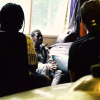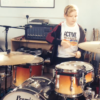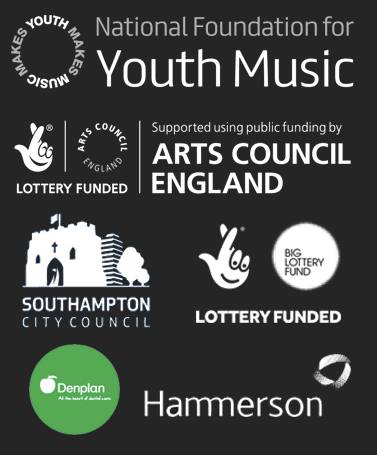Future Sounds – Rosewood Free School
Reflective Blog by Ignacio Agrimbau, SoCo Music Project
Context
Reception class teacher at Rosewood became particularly interested in developing a series of 1:1 case studies, but also to find ways to combine their sensory integration and physio work with group interactive music-making. Following feedback of vocal improvisation sessions concerning engagement and interaction, Esther was commissioned with the expansion of the school curriculum to include a full section on vocalisations, to which we have contributed to.
Esther has since been put in charge of expanding the Rosewood curriculum to emphasise aspects of vocalisations. Ignacio has supported this with a piece of writing in which he outlines his approach to vocalisation in interactive music facilitation.
Reflections on Vocalisations
My approach to vocalisations does not follow a clear scheme or system. It is a combination of my training in performance and improvisation, some text composition, my training in intensive interaction, and some readings on SEN-D pedagogy and music therapy. It is tricky to remember the stuff that I assimilated over the years. But above all it wasbuilt on practice, following some quite influential experiences or readings.
I first started experimenting with the kind of vocalisations that you heard me doing in sessions in a very different context. It was when I was mostly working as a composer, and I was part of a group of musicians giving concerts on what is usually known as ‘sound poetry’. In other words, poetry that barely has any semantic sense, but it relies on the sensations and references of the abstract sound of the language, and the intentionality with which it is performed. That was explored by Italian and Russian futurist sound poets and composers, as well as throughout the Dadaist movement in central Europe. There were many re-incarnations of that, but I do not know them very well. I remember I was very impressed by an article that somehow summarised the aesthetic and technical principles of sound poetry performance. It was written by Jon Erickson in 1985:
I found the principle of ‘language of presence’ more helpful than most of the readings I did on intensive interaction or music therapy. It is mostly because it focuses on the expressive impulses behind vocalisations, rather than the technicalities of how interaction unfolds or how the voice is produced.
My favourite intensive interaction author is Phoebe Caldwell; she’s been a huge influence. The literature coming from music therapy, community music or specialist music education usually focuses too much on ‘singing’, and sees vocalisations from that angle – which can be a bit limiting, as it risks projecting a model to understand the different uses of the voice based on neurotypical cognitive mappings.
Although we know that different parts of the brain become involved when we sing, we don’t really know how that plays out with individuals with PMLD. Still, there is some very interesting stuff about how music motivates vocalisation. In my experience, I found that sometimes sustained instrumental sounds can motivate vocalisations from PMLD participants more than the voice. I never figured out the reason for this, but it might have to do with the fact that sustained
instrumental sounds are associated with intonational rather than speech like utterances in a very instrinct level. I am sure there are writings out there about this. Here are some I know:
https://www.ncbi.nlm.nih.gov/pmc/articles/PMC3651031/
https://journals.sagepub.com/doi/abs/10.1177/0022429419890328
At school you have a copy of ‘Approaches to Communication Through Music’ by M Corke. I respect it is a pioneering but, as it discusses intensive interaction in a music-making context, but I did not find it helpful. There is barely any discussion of what actually happens during the moments of interaction, and discussion is concentrated on the type of activities that frame those moments.
Some people approach vocal interaction entirely from an angle of vocal production experimentation. Again, that approach can be useful, particularly to expand the repertoire of vocal sounds, but provided that is sensitive to the impulses that motivate vocalisations. The great aspect of this approach is that you can connect with children at the level of sensory experimentation; this can be revealing particularly when regardless of the harshness or softness of theutterance, the drive behind the vocalisation is sensory exploration. Yvon Bonenfant, who for a while did some research at Rosewood, specialised on that.
Finally…there are other professionals that interpret intonational, or blurry speech-like vocalisations as prototypes of melodic constructions based on core tune types. They are (hopefully!) aware that children do not always intend them this way but interpret them like that in order to include them in compositional processes. You can pick up on the core gesturality of a vocal gesture and make a tune or beat out of it, and in such a way you include that participant in themaking of a composition.
I have used this method a few times, but in most cases I kept it quite literal, so that it was very clear to the participant that the new bit of the piece was based on her input. Other practitioners take it much further (the most extreme example I know was a blurred downward vocalisation from a girl with SLD which turned into a definite, harmonised and orchestrated melody performed
by the full BBC symphony orchestra and a huge choir). That might sound amazing, but there is the issue of mediation and focus. Who has done ‘we hear’, how close does the end result feel to the child, and who are we playing this to?






